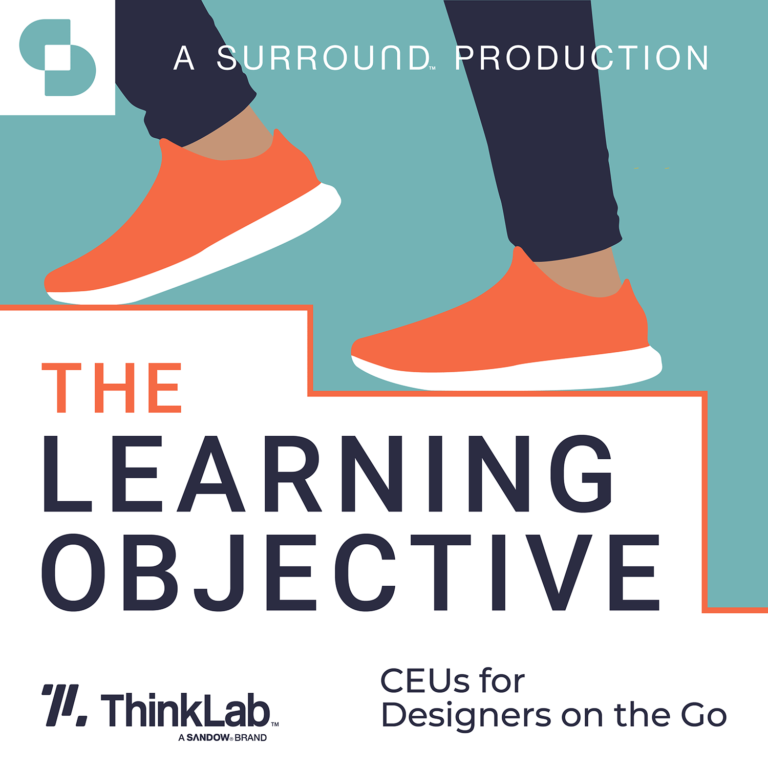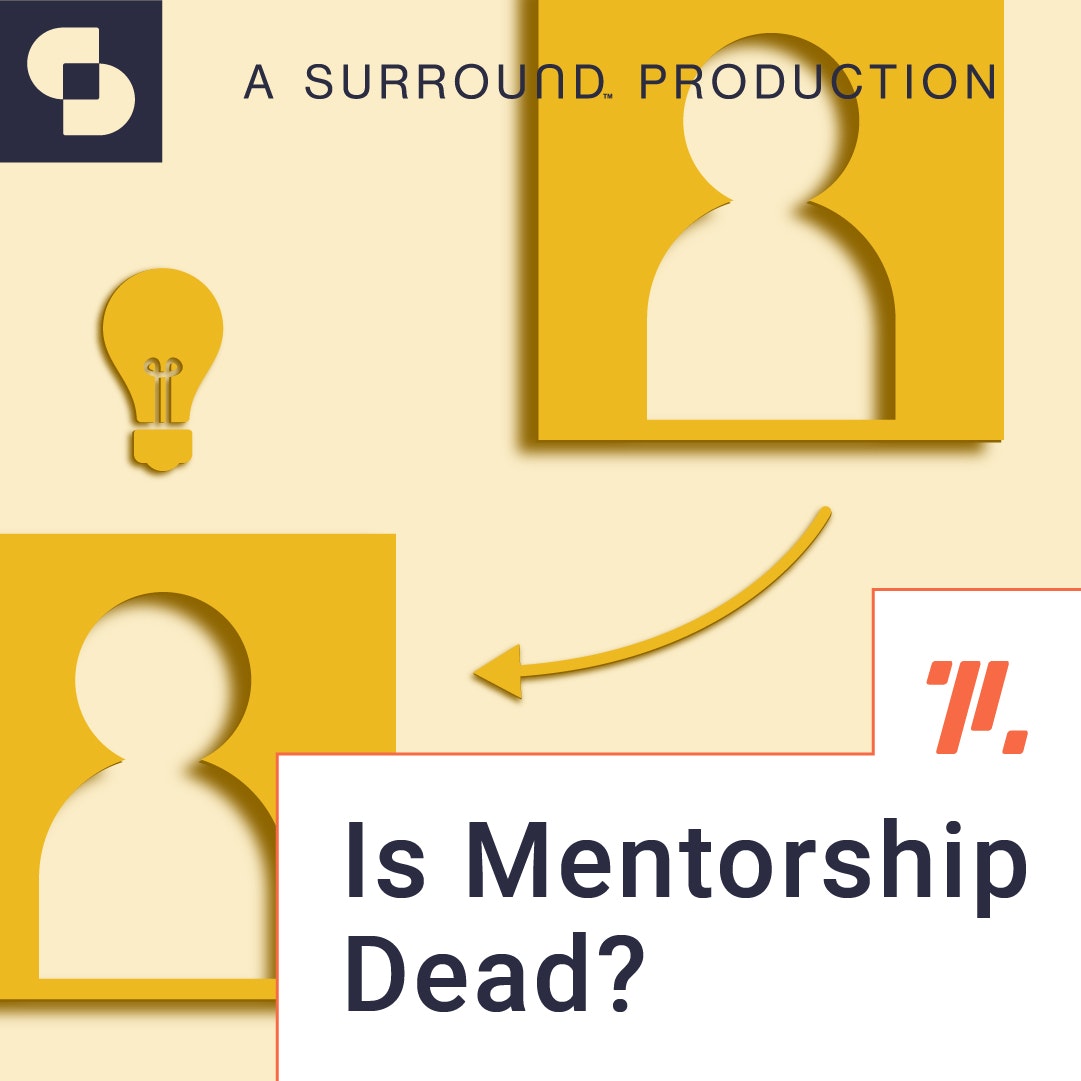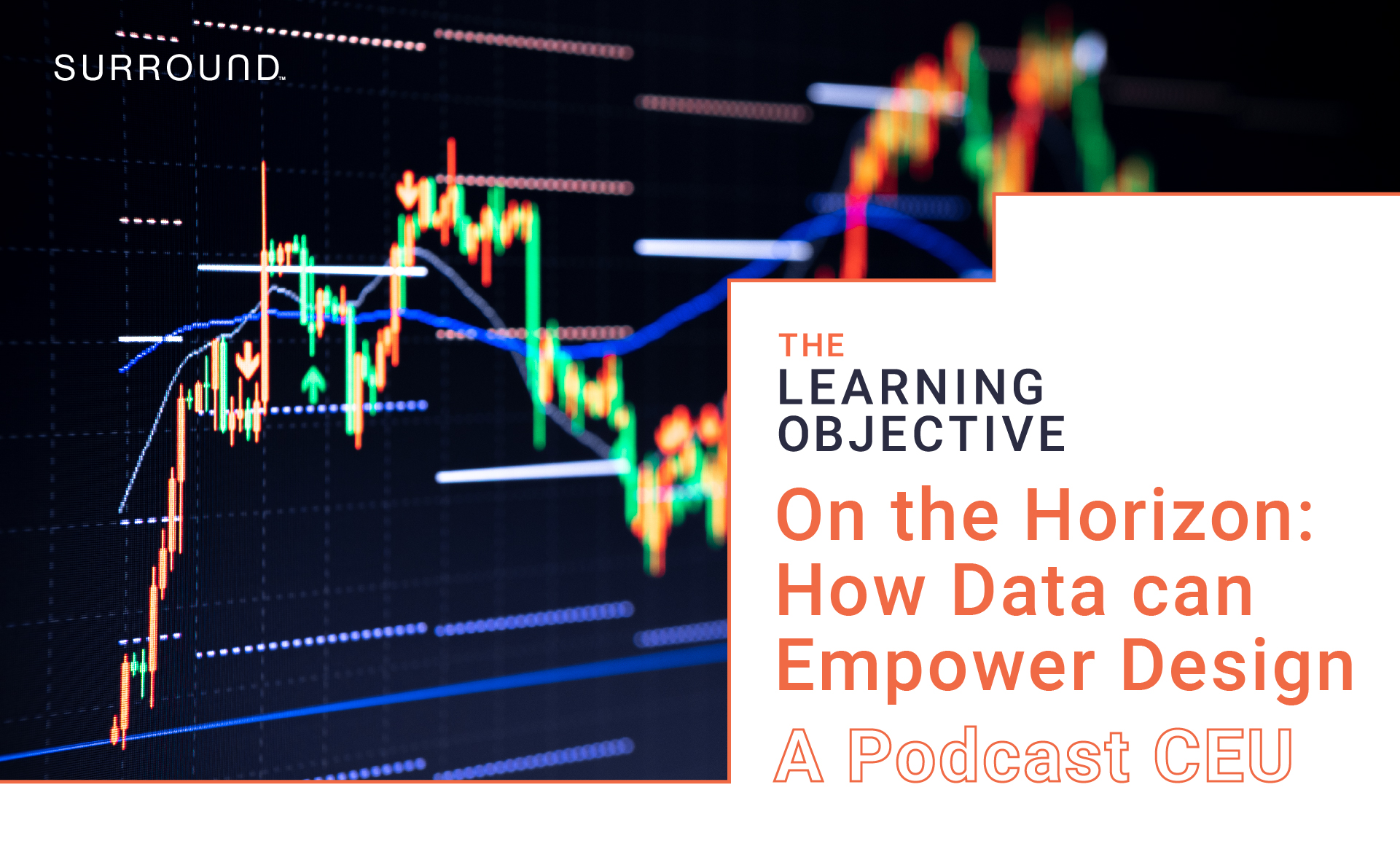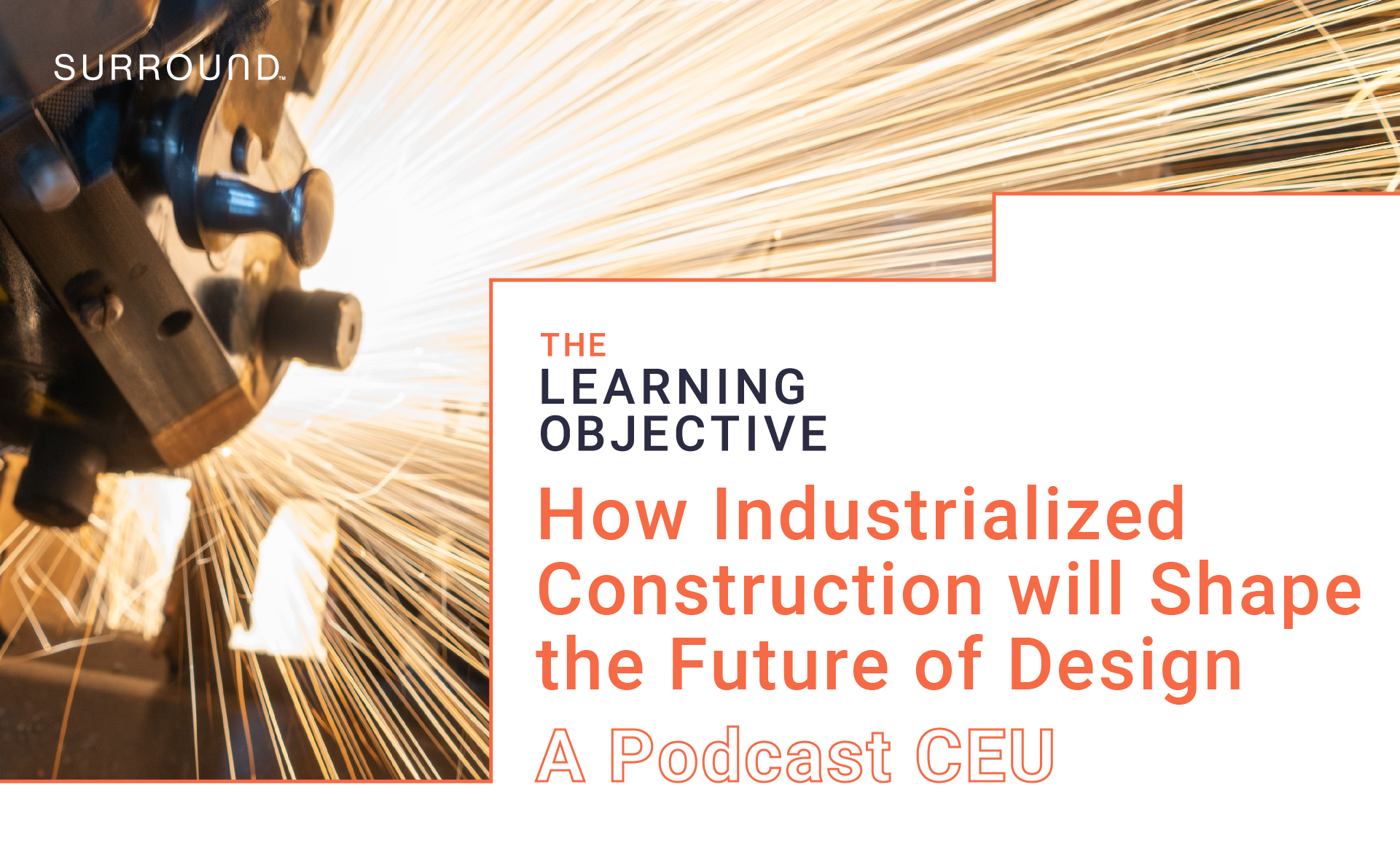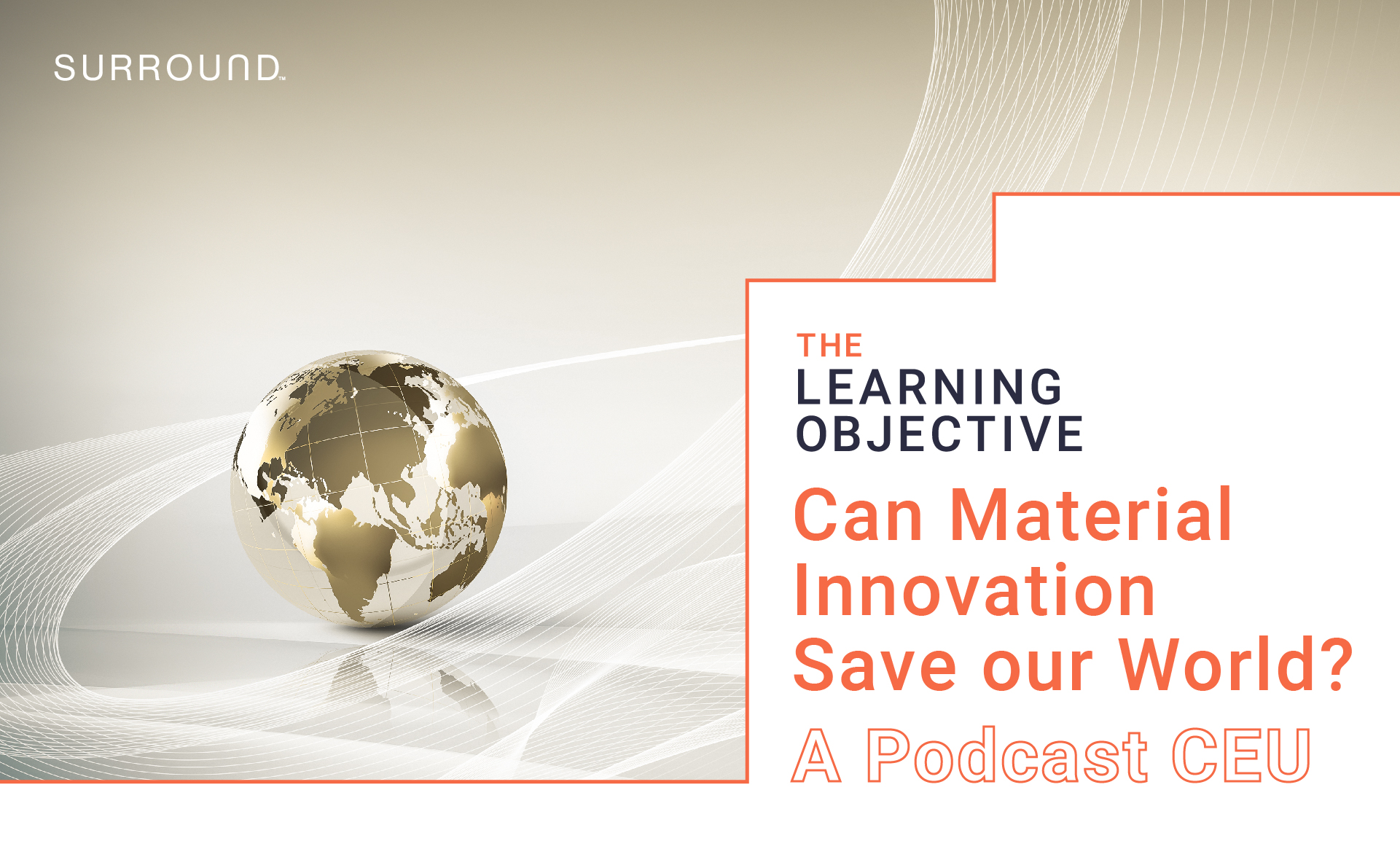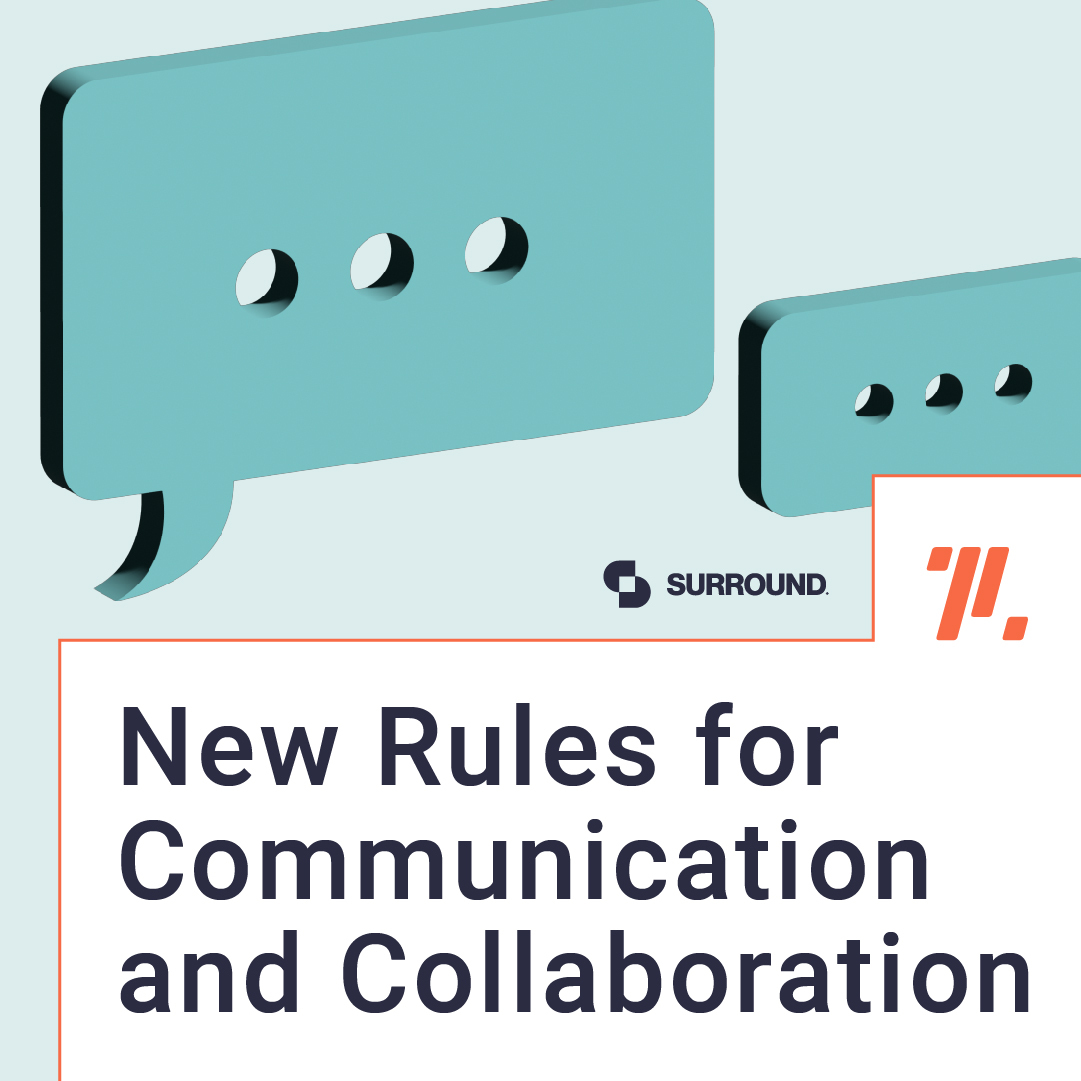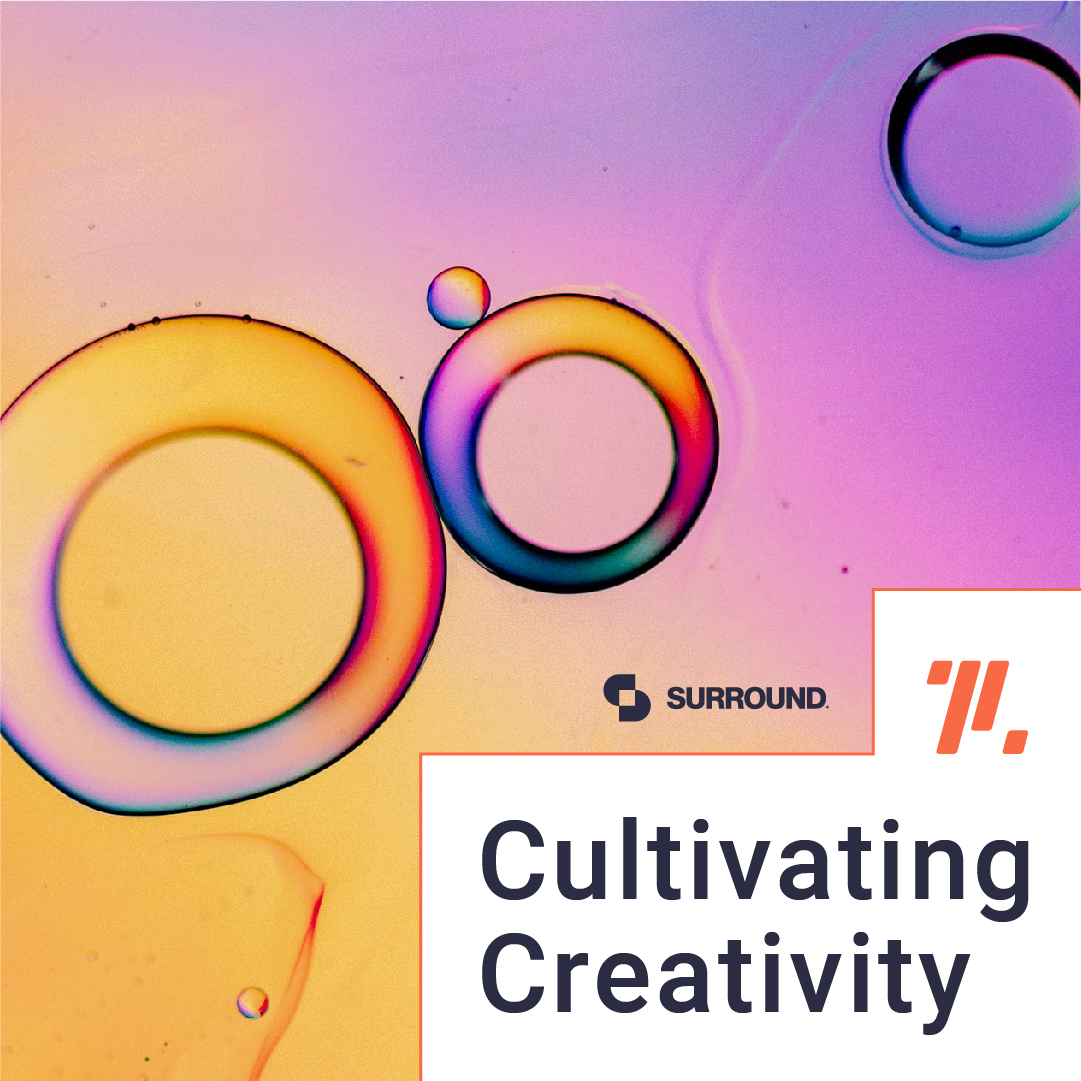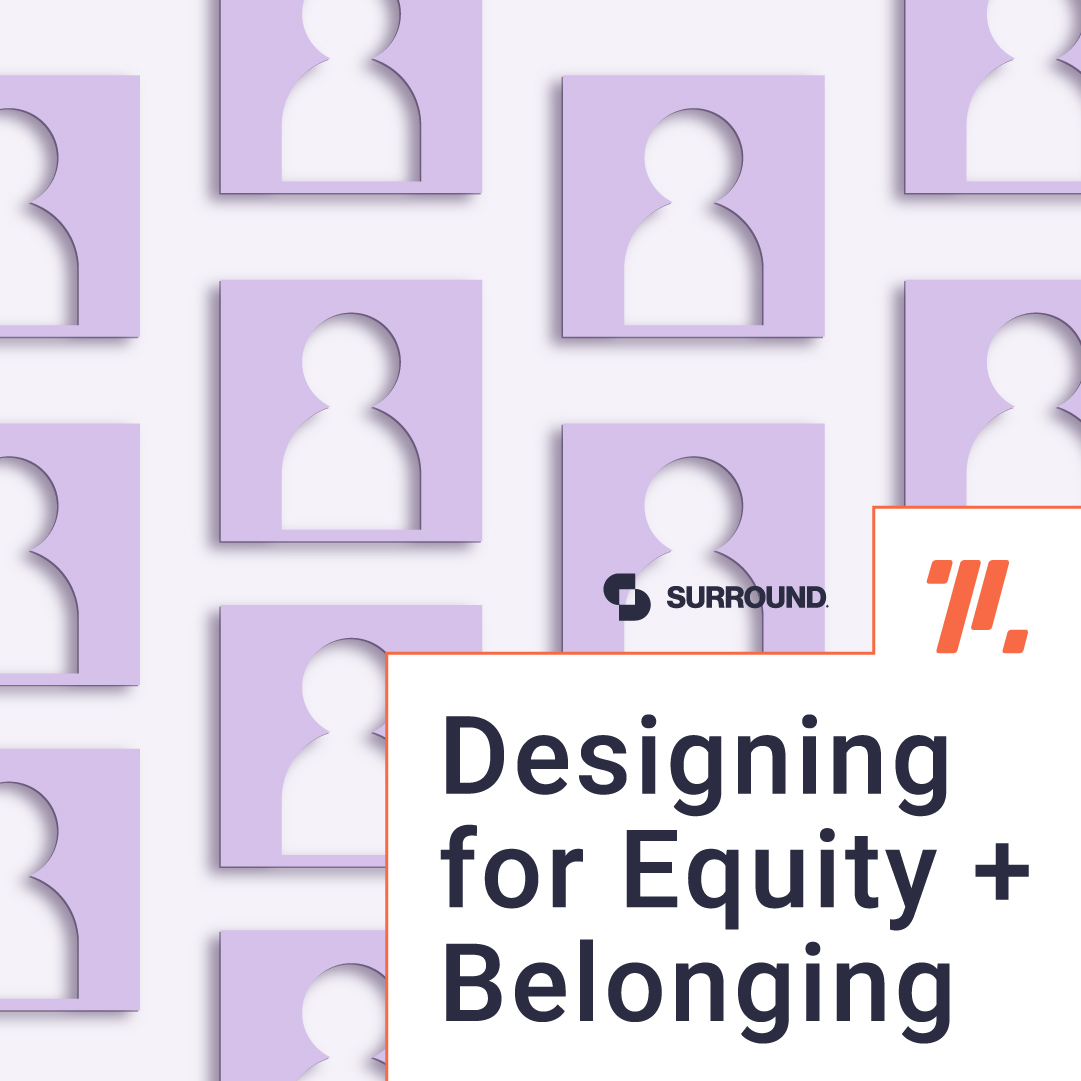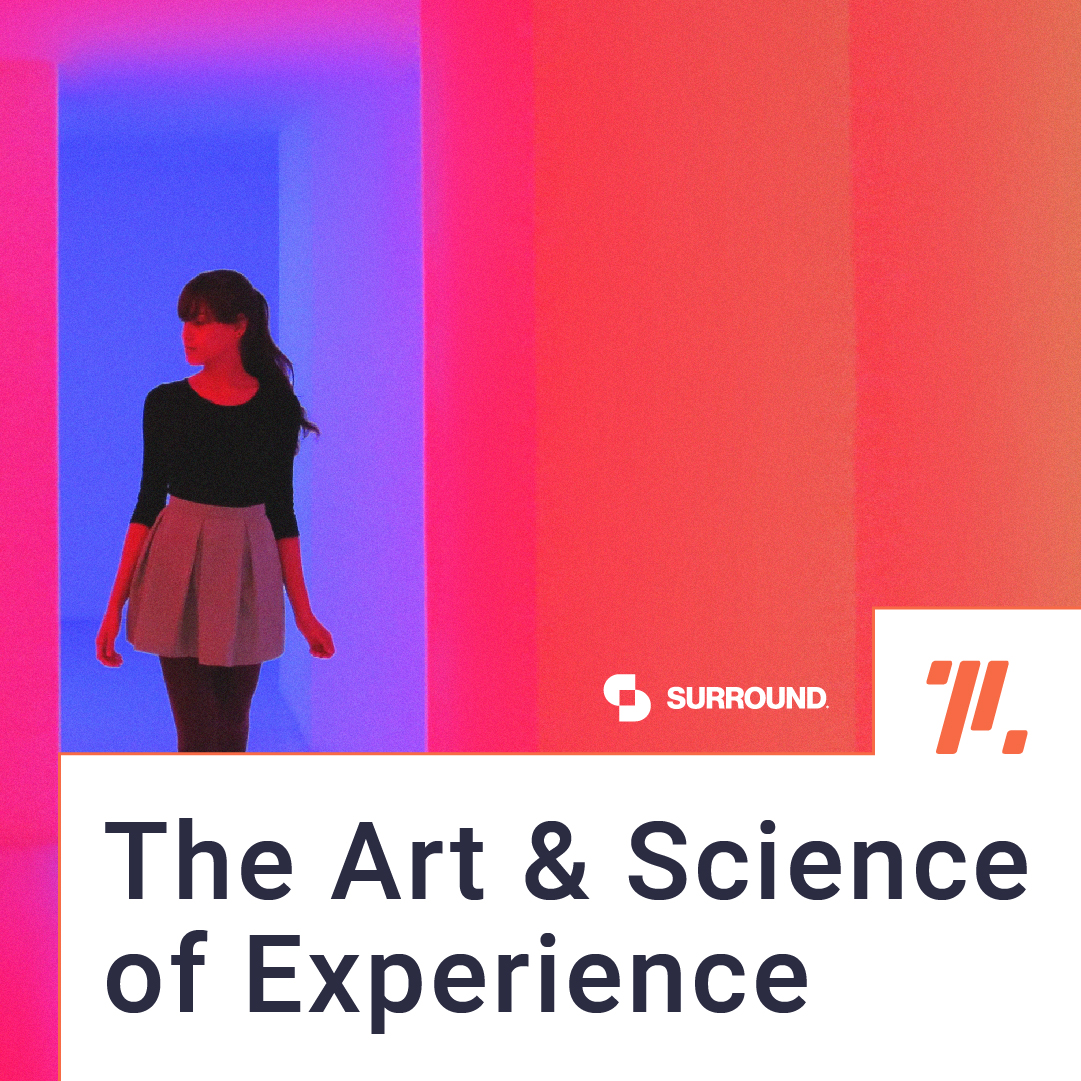In this episode, presented by Panolam, ThinkLab interviews Amanda Schneider, president and founder of ThinkLab; Mardi Najafi, vice president of retail strategy and design at Figure3; and Kari Anderson, an interior designer–turned–UX designer. They discuss the blending of physical and digital and how to take the best of both worlds to supercharge projects, processes, and relationships with clients and customers.
Accredited for: IDCEC, AIA | 0.5 CEU/0.5 LU
After listening, you will be able to:
- Interpret what “phygital” means.
- Analyze the shifts happening in the specification process.
- Examine the customer journey in retail for inspiration.
- Relate phygital thinking to interior design.
Our first interviewee, Amanda Schneider, is president and founder of ThinkLab. She describes shifts in five key areas at the intersection of design and product: showrooms, libraries, events, product presentations and product discovery, and the role of the local rep.
Our second interviewee, Mardi Najafi, is vice president of retail strategy and design at Figure3. He discusses major changes to the B2B consumer experience from before, during, and after the pandemic and why interest in physical retail has bounced back. And he shares which B2B brands he considers cutting-edge in providing a harmonized buying experience.
Our third interviewee, Kari Anderson, is an interior designer–turned–UX designer. She shares three learnings from effective UX design that interior designers can use to optimize physical spaces, and she explains why AR and visualizers are the digital technologies most empowering designers today.
Quiz: Want CEU credit for listening? Click here to take the quiz, and earn your certificate of completion.
How it works:
Step 1: Listen to the episode.
Step 2: Visit this link to take a short, 5-question quiz.
*Scoring an 80% or above on the quiz will earn you 0.5 CEU/0.5 LU.
Step 3: Upon passing the quiz, receive your certificate of completion from CEU provider Panolam.
Connect with our expert guests on LinkedIn:
Mardi Najafi: I always say that physical retail isn’t dead — boring retail is dead.
Amanda Schneider: Our industry has been built upon very analog systems. But in this increasingly digital era, we have really had to shift to digital, and there are some uncomfortable pieces to digital.
Kari Anderson: It does not matter if you are a client, if you are an architect, designer, a sales rep — it boils down to [providing] access to information to make timely and informed decisions.
Meredith Campbell: You just heard the voices of three different perspectives we’ll get in today’s episode. When it comes to the blending of physical and digital, it’s no longer an either/or, even for those of us who design physical space. How do we take the best of both worlds to supercharge our projects and processes?
I’m your host, Meredith Campbell, research and content development at ThinkLab. And this is The Learning [00:01:00] Objective, a podcast for the architecture and design community where you can earn continuing education credit for listening. Today’s episode is approved by IDCEC and AIA.
In part one, we’ll get the research perspective from Amanda Schneider, founder and president of market research firm ThinkLab. ThinkLab has been researching how the blend of physical and digital is impacting the way we specify product and interact with our teams and clients. She’ll share new research about our physical–digital journeys in the design ecosystem.
Then in part two, we’ll hear from Mardi Najafi, vice president of retail strategy and design at Figure3. Retail is arguably leading the way when it comes to designing blended physical/in-store interactions with the brand and digital tools to remove friction in the buying process. What can we learn from the work their team is doing to inspire your process, regardless of which sector [00:02:00] you work in?
And finally, in part three, we’ll hear from Kari Anderson, interior designer–turned–UX designer with practical advice to design phygital journeys in interior spaces.
But first, here’s today’s episode sponsor and continuing education provider, Tricia Rongitsch from Panolam, with the learning objectives.
Tricia Rongitsch: After listening to today’s episode, you’ll be able to:
- Interpret what “phygital” means.
- Analyze the shifts happening in the specification process.
- Examine the customer journey in retail for inspiration.
- Relate phygital thinking to interior design.
Part One: Amanda Schneider
Amanda: I’m Amanda Schneider. I am the founder and president at ThinkLab. I am a product designer by background. I grew up in this industry on the manufacturer side, starting in product design, moving into market research and product development through a role in showrooms — which is really the first time that I saw the world of interior design and industrial design come together.
And I saw that there was a real need to bridge a gap. As much as you would think that they’re [00:03:00] similar, there was really an opportunity to drive an insight-focused approach to helping blend those two worlds.
Our tagline at ThinkLab is “researching the world of design.” A lot of ThinkLab’s research really is focused around helping interior designers understand the product people and the product people understand how interior designers work, and that’s a lot of the foundation of ThinkLab.
Meredith: Amanda introduces us to a word that you may have heard before, but its origins are from outside of the realm of the interior design industry: phygital.
Amanda: ThinkLab did not invent the word, but we have pulled it in a big way into the world of interior design. We say phygital: It’s really a simple blending of the words physical and digital.
Our industry has really been built upon very analog systems. We love to touch and feel. We are creative. We are building physical spaces, [00:04:00] so it most certainly makes sense. But in this increasingly digital era, we have really had to shift to digital, and there are some uncomfortable pieces to digital. Sometimes it feels impersonal, sometimes it can feel mechanic or even cold. And in an industry filled with creatives who love to hug and handshake, we’ve really struggled with this transition to digital.
But, while digital may be seen as negative, and our old, physical-only, analog world may be seen as antiquated, I think this idea of phygital is the idea of blending the best of both worlds: It’s the efficiency of the digital world. (Think of leveraging visualization to help our clients visualize with these increasingly helpful digital tools in a way that we could never do sustainably if we were to actually build space and destruct it and throw it away, if you will.) But it’s also leveraging the best of this [00:05:00] analog world and making sure that we retain those things that we’ve always done that still make sense in this digital era, so we don’t move too far to make it impersonal, mechanic, or cold.
Meredith: But there’s another powerful reason that designers should care about this integration in their own work. This may be something you can relate to.
Amanda: We’ve heard so much about this time drought as part of our most recent hackathon. And I think this phygital era really speaks to that time drought, in this Amazon era when our clients expect so much, like immediately, without time and creativeness and iterating on a design.
I think the idea of phygital really supports [dealing with those challenges]. Because it helps us to see where that creative time is best spent, and where we should be giving up maybe some of these nostalgic things that don’t make sense anymore, so that we can create a great experience for our clients — not only in the final space that we produce, but also in the process of getting to that space. [00:06:00]
Meredith: Amanda shares what ThinkLab’s research reveals on how some of the mainstays in our industry are changing.
Amanda: So, every year, ThinkLab does something that we call a hackathon, and a hackathon is really just a chance to tackle some of the industry’s biggest, hairiest challenges. A lot of that work really takes place at this intersection of interior design and product people in the name of specification.
The hackathon that I’m going talk about was looking at the future of product specification as we enter this hybrid era. Now, at the time of that research, we weren’t really sure if this hybrid era was here to stay or a temporary thing as a result of the pandemic.
Meredith: But these insights did stand the test of time. Amanda shares how these five cornerstones at the intersection of design and product have shifted, starting with showrooms.
Amanda: In the future, showrooms will be less about formal, awkward tours and more about informal, interactive workshops [00:07:00] — so really looking at that valuable in-person time and how it’s going to be more valuable in this phygital era.
As we think about physical space, I think it’s ironic, and I know that there’s a lot of weight around this back-to-office conversation, but I think, like our back-to-office conversations, showrooms are one that ironically, as we’re freed up from them, it makes the time that we spend in them and in that physical space more valuable, so we don’t want to waste a moment of it. So we think about when we say “workshop,” I think it really has to do with optimizing that in-person time.
Meredith: The second: libraries.
Amanda: Our phrase around this one was “less library, more lab.” I think maybe because of my upbringing, I think of “library,” and I think of a space you’re supposed to be quiet in and you’re supposed to behave. And when I think of “lab,” I think about breaking things and experimenting and maybe even getting messy.
And as we think about the future of [00:08:00] libraries, much like when we think about showrooms, it’s really going to be about leveraging where that physical space is best, and really cueing in to that speed as well: How can we make this the most functional space possible?
Meredith: The third is events.
Amanda: As we think about how to spend our valuable in-person time, it’s about less fluff, more substance. We’ve heard a lot of quotes from our research [saying something like]: “If I’m only downtown three days a week, I can’t imagine taking a two-hour lunch just to go have lunch with a rep.” Or: “So, if I’m going to spend my time to go to events, if I’m going to spend my time going somewhere, I want it to be because I’m learning something that is augmenting the job that I have to do when I’m away from my family or my hobbies or my friends. I want that event to be worthwhile to further my career or my projects or something else that benefits my life.”
So: less fluff, more substance.
Meredith: Number four: product presentations and product discovery.
Amanda: This one has been a really interesting one. Because I think now it’s [00:09:00] less about “educate, educate, educate,” and I think that’s where our industry had been.
In a previous life, I was a rep, and I could go into a major firm in downtown Chicago. I had a monthly standing appointment. And as long as I brought great food, the whole interiors department would show up, and I could talk about a chair or whatever else I wanted to for a whole hour. But one of the things we started saying at the onset of the pandemic is “15 minutes is the new hour.”
And I think it’s less about “teach me everything there is to know.” Because in this Amazon era, especially in this increasingly digital era, when we all have so much coming at us, there’s only so much our brains can handle. So I feel like there is this vibe around “Don’t teach me everything there is to know, but teach me to fish so I know where to find what I need on your website, I know when I should be inspired by your brand, etc., etc.”
Meredith: And finally: the role of the local rep.
Now, ThinkLab research has found that 95 percent of designers [00:10:00] now begin their product search online versus with a rep. But Amanda shares that despite how the specification process is changing, the role of the local rep is still extremely valuable.
Amanda: This has shifted drastically in the last few years, and we have a lot more work to do here. I want to first say that that local rep, those relationships, we hear they are still so very important. We’re in the midst of our current hackathon, which is all around Gen Z, and even to Gen Z, I can say those relationships are so important. But how they’re leveraged in the future may be a little bit different.
One of the biggest things that we hear is shifting is what was the fount of knowledge. for this rep, Now, I want to be able to self-serve and access some of that knowledge. Think about that “teach me to fish” idea. I want to be able to access some of that, but when I need a human, it’s because I need that human to do things that a machine in this cold, digital world cannot. And I really want to make sure I still have those warm connections. So, relationships matter.
So, if we think about it as [00:11:00] less “I have to go to you for everything, and I am bound to you,” less this fount of knowledge and more this concierge: “This person can really help me curate what I actually need to know.” I think that’s another way things are changing for the future.
Meredith: We’ve talked about the intersection of product specification and interior design. Now, let’s shift our focus to the phygital journey with your clients and internal teams.
ThinkLab is also the subcontractor that analyzes all of the data for the Interior Design Giants of Design, and based on that research of the largest design firms in the country, Amanda shares her advice.
Amanda: I would say the biggest one overall is “Be open to what we call a ‘beta-test mindset.’” And this applies with your clients, it applies with your colleagues, it also applies with your product partners.
This new normal is just that. It’s new. And so we’ve got to really be open to testing, giving direct feedback (even to some of those partners, coworkers, colleagues, clients) about what’s [00:12:00] working, what isn’t. But really be open to these new ideas, fearlessly test them, help to state what these social norms are in this next normal.
The second one is “Don’t throw a fish in the air.” When we think about this physical–digital world, we have this great quote that says “Just because you throw a fish in the air does not make it a bird.” You can imagine that fish falling back into the water and thriving in the water, but really not thriving well in the air. And I think too often, in this physical–digital world, what we often want to do is take what we knew in the physical realm and just repeat it digitally.
Let’s take meetings, for example. How many of us feel over-constrained by meetings? Like, we’ve got too many meetings. Maybe that worked in the physical realm when we were face-to-face, but it is not working when we go Zoom-to-Zoom in this digital realm. So how do we really re-think that in the digital realm? It gives us an opportunity to really re-think asynchronous work, as one example.
So it’s not about taking what worked over here and just repeating it over [00:13:00] there. It really is about reinventing how something could thrive when it’s intended to breathe in the air and not breathe in the water, or thrive in the digital world when maybe it was previously invented to thrive in the physical world.
And the last one is something that I’m encouraging everyone to think about just because it’s hot on my mind, because of our current hackathon — which is this idea of Gen Z as prototype. I have personally spent the last couple of weeks in over 20 hours of focus groups with Gen Zers, looking at some of the challenges that have come up from firm leaders in our most recent hackathon.
And the beautiful thing about Gen Z is that they are so pure and fresh. There’s a great saying: “A fish doesn’t know it’s in water, it’s just swimming.” And I think sometimes we’re quick to dismiss younger generations as people who don’t have the perspective or don’t have viewpoints about what they’re seeing. But having spent so many hours with them over the last couple of weeks, it’s really [00:14:00] beautiful to see that purity.
And, as we think about this phygital world, one of the biggest a-has from spending this time with them is that they really don’t see a separation between physical and digital. In some of these sessions, we would ask them about what they would do in the physical world or when they’re face-to-face, and they would talk about digital tools like Miro that they would leverage. And then you ask them about digital tools, and they would talk about something that involves face-to-face. In their mind, everything is so blended, they just can’t even see it as separate.
So, I think by looking at the fresh perspective of some of our youngest generations who look at things in very different ways and very naturally and authentically, we can really start to see these ways the future is likely to run. That will give us more of those new ideas to beta test and reframe as we try to reinvent our own process.
Meredith: And to spark innovation inside our industry, Amanda suggests we look outside of our industry.
Amanda: It’s [00:15:00] challenging for us to think about our own process. We are an industry of product innovation. And whether your product is a chair or furniture or flooring, or whether your product is a physical space that is beautifully designed for someone to teach in or live in or work in, I think that we struggle to think about process innovation as in-depth as we think about our own product innovation.
The good news is there is so much inspiration available to us out there, and one of the things that we talk about all the time is that we are a B2B industry. All of our buyers are B2B buyers, yet we are all, in our lives as consumers, watching this B2C (or business-to-consumer) world get increasingly frictionless. And when I think about our B2B buyers (that’s business-to-business), I think that no longer are they going to go to work and expect the same friction-filled processes that we’ve always had.
So the good news for us in the B2B world is [00:16:00] that there’s tons of inspiration out there if we listen. We give a lot of examples of this in our Design Nerds Anonymous podcast. As one of our season five interviewees, a woman by the name of Natalie Nixon, says, “creativity loves constraints.” So I think when we try to put together two things that maybe don’t belong together, that’s where a lot of really creative ideas come from.
And if we can put some of those constraints to force some of these things together that don’t inherently belong together, that’s where we can take some of this inspiration from what works in other realms and be the first to bring it to our beloved industry.
Part Two: Mardi Najafi
Meredith: Now, as Amanda mentioned, the B2B space is one of the best places to look for inspiration, so we wanted to get the perspective of someone who has deep roots in the retail sector. Next, you’ll hear my interview with Mardi Najafi. I joined him virtually in his Toronto studio.
Mardi: I’m Mardi [00:17:00] Najafi. I’m the vice president of retail strategy and design at Figure3. Figure3 is a Toronto-based interior design firm. We have four studios: workplace design, residential design, hospitality, and retail. I run the retail end of everything at Figure3.
Meredith: One of the quotes that I heard you say is “When you can buy anything online, the reasons that you go into a physical store are more than just a transaction.” How do you see the retail sector responding to this balance of physical and digital?
Mardi: The response is so prominent that we now have a new term: phygital.
Even before the pandemic hit, the Starbucks app was somewhat [offering] order in advance and pick up at curbside. Nike — in their Nike Live concept store that they started in Melrose, Los Angeles — had curbside pickup and order in advance via your Nike app [00:18:00] and [you] don’t even come into the store, or [you] go into a locker and grab. So, the proactive, progressive retailers were already ahead of the game. The ones that were behind had to put all their efforts and money and get closer to where we are right now.
And we saw the rise of e-commerce during the pandemic, but there were a lot of things missing from it. What we learned was that [the draw] was the convenience factor. Everyone was just buying and enjoying this e-commerce, deliver-at-the-door kind of thing. Gradually, when the world opened up, as we saw in the past two months, unfortunately, a lot of e-commerce retailers started letting go of their staff because the hype went down. Why? After all, we’re human beings and we’re social beings, and we like to be in the know, be in the buzz, meet like-minded people. [00:19:00]
The e-commerce platform that was very convenient [also] had a lot of things missing. We couldn’t touch, feel, test, experiment. And the reviews and the comparables were very convenient, but gradually over time, we lost faith in them. So, all of a sudden, physical retail and experiential retail tipped over.
I always say that physical retail isn’t dead — boring retail is dead. What is it that would bring people into the space, to connect with your brand, connect with the stories you want to tell? It has to be services or product drops, or any touchpoint that they can’t get from the online experience.
Meredith: I love that part about convenience, that even though it was forced upon us, it seems like that convenience factor is a really important part of that integration.
You talked a little bit about the highlighted role of physical space. [00:20:00] Because all of a sudden, we were in this kind of 100 percent-ish (depending on where you were) digital experience with our brands. So, the new role of physical space has to do something that you can’t get in the digital space, right?
Mardi: One hundred percent. If you remember back in the day, before the pandemic, we would go into a store, ask for a particular size or a particular color or texture, and they would say, “We have it, but it’s online.” And the staff would rarely ring you up right then and there and say, “We’re going to send it to your home.” OK, [that means] now I need to leave and go check your online platform. There was a disconnect. Now, brands’ physical and retail [sides] are totally connected, immersed, intertwined together.
And if the inventory is not available in the store, smart staff has to be trained to ring you up, find the size and model that you want, you pay, and it’s delivered. You can either pick it up from the store or deliver it to your doorstep.
We always [00:21:00] talked about omnichannel and such buzzy terminology in retail, but never was everyone practicing it at the same wavelength that it should be. Right now, it’s really harmonized. And even mom-and-pop stores, maybe they don’t have to courier it, but it’s to a level that, if they want to keep their loyal customers, they’d say, “I don’t have it right now, but I’ll send it to your door immediately when it comes in.” That’s the level of customer service and connection that everyone expects.
Meredith: It’s really more like a concierge versus just someone helping you transact in the store, that they’re guiding you through this experience, whether it’s online or whether it’s in store.
Mardi: Totally. All these retailers, their strategy model was just a destination. They thought people would come to them no matter what. But now there are so many choices from different levels, [00:22:00] be it what your brand stands for, what your company stands for. Are you delivering to what your promises are?
And consumers are very smart these days. You can’t fool them with just a few mission vision statements on your website. You have to deliver.
Meredith: Are there any brands that are notable to you that are designing these really fantastic physical–digital experiences?
Mardi: Not that I’m paid by them or on their payroll, but Nike and Starbucks have always been cutting edge on experimenting, and they’re role models for many other retailers.
From a retail design standpoint, we retail designers always use Apple as [an example of] cutting edge. Apple decided to unbox all these expensive gadgets that we buy. Because, prior to that, it was all boxed. But then, with the unboxing, they put it on a table, and you start playing with it. That was pioneering. So, from a retail physical standpoint, [in terms of] store design, [00:23:00] Apple was a pioneer. But in terms of blending seamless integration of digital and physical, Starbucks and Nike have been on the forefront.
A lot of others are catching up and experimenting, but it’s all about how it works and how seamlessly it works. Whether we like it or not, we are a generation that doesn’t have patience anymore. And a big term in retail is the “frictionless customer journey.” So, whatever your business is — whatever your store model, physical or digital — that journey, that wire map from A to Z, has to be frictionless.
How many times have we been on an online platform and we want to ring something up, and then it doesn’t connect to a PayPal or any other fast-serve checkouts, and you have to pull out your credit card and you’re like, “Ah, whatever. I don’t want to even go through with it.” That happens in physical [spaces], too. [00:24:00] How many times have we been in a store, where you’ve been looking for an associate to get into a fitting room, and you’re like, “Forget it.” Or how many times have we been at a checkout and the checkout line is too busy, or people are fumbling with the self-serve checkout, and you’re like, “Forget it.” Or you’ve asked for a certain size, and the staffer disappears in the back of house.
So, all those are examples of pain points. Observe, study, research your pain points, work with experts, and take care of those pain points, so it’s a frictionless journey.
We talked about cutting-edge technology. There was a concept store in one of the malls in Columbus, Ohio. It was a DTS (direct-to-consumer) brand like Amazon. You know how you go to certain apparel stores and you look at the array, and many of us look around and if there’s mannequins in the window, that’s what we want. It’s paired well, and it works well. They’ve asked visual merchandisers to put [00:25:00] together all these pairings and outfits together with all different brands. And [this shopping experience] was like going to an IKEA store and being in their showroom, and you see the bedroom and you get excited — and then on the side, there would be a breakdown [of the products on display].
So, [at the concept store,] an app showed you that breakdown. And OK, if you had the jeans, you’d go for the top and the bag and the sneakers, right? And you would go in and use technology to choose your product, and it would show up in the fitting room. You go try it. If you don’t want it, you throw it back through a bin. It comes out of your apps, similar to the Amazon Go experience. (It’s the convenience store that you go and grab and go and walk out, and you pay through your app.) It was now for shopping for apparel, in a very exciting mission impossible-y way.
So, I know it’s a concept, it may roll out and may be successful. But for many retailers, if it’s right for them, don’t force it. If it’s not [00:26:00] for the type of target group that works with your brand and connects with your brand, don’t go too far into the technology aspect. Just study who you’re designing for, what makes their life easier, what makes your staff’s life easier, and try to eliminate all the pain points in the shopping journey.
Meredith: It was the brands showing you some already created outfits so you didn’t have to work so hard to imagine it. Because so often, it’s overwhelming when you walk into a store and you see 10 million different options. More’s not always better.
Mardi: And that’s the pain point that they found: If they pair items together and create this “curated bucket,” if you will, the shopability would be high.
Meredith: Mardi leaves us with his thoughts on how the pendulum may have swung too far in some areas, yet the future of retail in the blend of physical and digital looks bright.
Mardi: In the pandemic, we went too far in many things in the modern world, [00:27:00] especially in the first world. Like, we went too far into consumerism, and now we realize that it’s not about buying stuff, it’s about what makes us happy.
We went too far into polluting our Mother Earth, and we’re now pulling back. Sustainability and caring and deciding and making wise choices is now important, and the younger generation is thinking better and analyzing that way better.
We went too far into turning ourselves into introverts, and technology enabled that. And then the pandemic reminded us we’re social beings and we thrive being with like-minded people. So, it’s that balance that everyone’s going through, that society is going through. And it also applies to any industry we’re working in, especially to our focus and discussion of today, to retail.
And we see that, we see that landlords are now thinking about sustainability. [00:28:00] There’s a new building in Milan, in the neighborhood of Porta Nuova. [Gioia 22] is a new master-planned, industrial, multi-use retail complex, and the landlords there, they only lease spaces for retailers if have sustainable fixtures and finishes and details in the store, and when their lease ends, they have to take everything with them. Nothing can go in the landfill. And this is really great. I wish these types of learnings would also gradually come to North America, and we start practicing that.
Part Three: Kari Anderson
Meredith: In our final section, we’ll get perspective from an adjacent industry: UX design. Here’s interior designer–turned–UX designer Kari Anderson with practical advice on how digital experience can inspire our physical interior spaces.
First, how did she end up in UX design and how are the fields [00:29:00] similar?
Kari: My background started with my journey over two decades ago, graduating with my interior design degree. And I spent the majority of my career at commercial furniture dealerships. And even in my college days, I was that early adopter of technology. I was also a change manager for the dealerships that I worked in to help others adopt those technologies.
Because I’m very curious and a continuous learner, that’s what took me back to school for UX design. I wanted to learn more about what design is like within that digital space. The digital space is only growing and growing more in importance in all of our lives.
I have my own consulting business focusing on UX design for commercial interiors. I did not want to lose those 20-plus years of experience in the knowledge and language of commercial interiors.
Meredith: So, for those of us who aren’t familiar, [00:30:00] what exactly is UX design?
Kari: When you go to a website and you have a really great experience — and you’re able to find the places that you need, the information that you want — that is good design. And a UX designer probably participated in that.
When you go to a website and you have a bad experience, that is also where I spend my time as a UX designer to be able to find that functionality and how we can create a better experience.
Meredith: When it comes to technology’s role in design, Kari says that it all boils down to one thing that we all need, regardless of where we reside in the design ecosystem.
Kari: It does not matter if you are a client, if you are an architect, designer, a sales rep — it boils down to [providing] access to information to make timely and informed decisions. It’s as simple as that.
So, what technologies are out there helping us? I would definitely say AR is. I’ve [00:31:00] seen amazing presentations utilizing AR. “Oh, you really like this flooring product,” and they can display it: “Here’s what it looks like in your space.” We can really cut a couple weeks of mock-ups out of the process, multiple samples that are [no longer] needing to be sent to this space. So, integrating AR has become a large success. And I say AR (the augmented reality) versus VR. There are some challenges with VR, with the ability to put on those goggles, putting people in some uncomfortable positions.
Manufacturers have really implemented visualizers or configurators in their websites, and that goes back to [providing] access to information to make timely, informed decisions. So, anybody now can start configuring a product versus previous times when you had to go through that whole process: “Oh, let me ask my sales rep,” and the sales rep would go through the process of getting all the information and providing you pricing back. But with a [00:32:00] visualizer, anybody can go in and can configure and design that product for themselves so they feel empowered. And once they’re empowered, they’re quicker to make their decisions, too.
Meredith: As we heard in our previous interview with Mardi, we’re living in a phygital era where our experiences with physical space and digital space are increasingly intertwined. What should those of us who are designing physical space be considering for the digital experience as well?
First, consider the devices your occupants are using.
Kari: Consider that anybody that’s occupying that space, first of all, probably has three devices on them. Could be an iPhone, or any type of mobile phone. It could be a tablet, a laptop, a watch, Bluetooth headphones.
So, what does that mean? [They need] access to power. How do you connect to technologies, whether you’re displaying onto a larger screen, knowing that they’re on those devices? They’re probably always going to be connecting to [00:33:00] another human being.
So, what is the lighting like? If you are doing virtual meetings, is the lighting correct, so you don’t have the halo effect and the bright light isn’t shining behind you? Not all of us are walking around with our Instagrammable, correct lighting and microphones set up.
So, always think of those interactions in our spaces, whether it’s in large conference rooms, all the way down to personal meeting spaces.
Meredith: Next: Invest in technologies that reduce friction.
Kari: I am hoping that we are all going towards the investment into technologies that we have in our daily lives to be brought into commercial interiors. Look at some of those simple things that we have as mobile apps, or experiences that we have when we go to a restaurant, and now they’ve enabled online ordering and just making things very self-served so that we feel like we have choice and control.
Ultimately, it comes down to that. As human beings, we [00:34:00] like choice and control. So, how can we empower those technologies and experiences into commercial interiors?
Meredith: Finally, continue to experiment with new technology as part of your regular upskilling. ThinkLab research suggests that 91 percent of designers are eager to learn new technologies that will make their job easier, even if it initially takes more time to learn them.
Kari: Embrace technology. Do not be afraid of it. Challenge yourself weekly, monthly, quarterly. How do you learn something new and start utilizing that? Instead of “This is just the way that I do it. I’ve always used an Excel spreadsheet. I’m always going to just continuously use that.”
Have you empowered using Loom short videos to send to your client? Instead of a 15-bullet point email, use Loom to do a quick demonstration in a video. You can probably tell more in a three-minute video than you can in a 15-bullet point email that [00:35:00] took you an hour to construct, and then you’re also anticipating that the end user is going to be able to read between those lines.
Meredith: Here’s Tricia to close out the episode and share instructions for earning continuing education credit.
Tricia: I would like to thank everyone who contributed to this CEU podcast. At Panolam Surface Systems, we are excited to introduce our new specification and sampling resource guide. This new platform provides integrated, smart-connect links, allowing the user access to information and services accessible by the camera on your smartphone. This digital guide creates efficiencies by reducing physical samples to drive positive change for the sustainability of our earth’s natural resources.
Our goal is to provide you with a seamless experience. This is achieved by allowing the user direct access to sample ordering and technical product information that is always current. You no longer need to worry about outdated sample or product information. The time is now to adopt new tools and use old tools in new ways.
Quoting Amanda Schneider, who you heard earlier on this podcast: “The new world requires a synchronized swimming approach, where disciplines work together and create a combination of physical and digital tools to elevate the experience for a new phygital world.”
Thank you, I hope you enjoyed this CEU podcast.
Meredith: To obtain credit for listening, simply visit the show notes of this episode, and click the link to take a short quiz.
Thanks for listening and learning with us today. The Learning Objective is a SURROUND Podcast Network original production. Check out more shows from SURROUND at surroundpodcasts.com.
This episode of The Learning Objective was produced and edited by SANDOW Design Group. Special thanks to the podcast production team: Hannah Viti, [00:36:00] Wize Grazette, and Samantha Sager.

